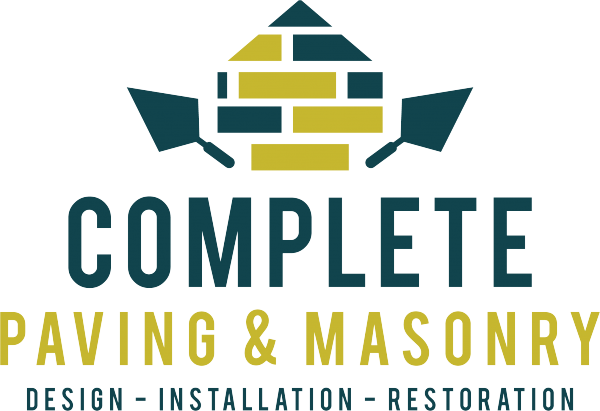Techniques for Bricklaying
Techniques for Bricklaying
When it comes to the art of bricklaying in Landscape Masonry Hyde Park, there are several essential techniques to master. Firstly, ensuring a level base is crucial for a sturdy and visually appealing structure. A solid foundation provides the necessary support for the bricks and helps maintain the overall integrity of the project.
Additionally, using the proper amount of mortar is essential for secure bonding between the bricks. Too little mortar can result in weak joints, while excess mortar can create a messy appearance and compromise the structure’s strength. Mastering the skill of applying just the right amount of mortar is key to successful bricklaying in Landscape Masonry Hyde Park.
Running Bond Pattern
Running bond pattern is a traditional technique frequently utilized in Landscape Masonry Hyde Park projects. This pattern involves laying bricks or stones in a horizontal row with each adjacent course staggered halfway. The resulting effect is aesthetically pleasing and provides structural stability to the construction.
In Landscape Masonry Hyde Park, running bond pattern is commonly used for retaining walls, pathways, and other hardscaping features. The simplicity of the pattern allows for quick and efficient installation, making it a popular choice among masons. Furthermore, the interlocking nature of the bricks or stones in this pattern enhances the overall strength of the structure, ensuring durability and longevity.
Importance of Curing Masonry
Curing masonry is a crucial step in ensuring the longevity and durability of any construction project involving brick or stone. In the case of Landscape Masonry Hyde Park, proper curing plays a significant role in strengthening the structure and preventing cracks or damage over time. By allowing masonry materials to cure slowly and evenly, it helps reduce the risk of shrinkage and ensures a more stable final result.
The process of curing masonry involves keeping the surface moist for an extended period after the initial set. This can be achieved through various methods, including covering the structure with wet burlap or applying a curing compound. In the context of Landscape Masonry Hyde Park, implementing effective curing practices not only enhances the aesthetic appeal of the project but also reinforces the structural integrity, making it resistant to weathering and external factors that could compromise its strength.
Moisture Retention Methods
Moisture retention in masonry work is crucial for ensuring the longevity and strength of structures. One effective method utilized in Landscape Masonry Hyde Park is the application of waterproof sealants. These sealants create a barrier that helps prevent water intrusion into the masonry, reducing the risk of moisture-related damage over time. Additionally, incorporating well-graded aggregates in the mortar mix can aid in moisture retention by allowing for better water distribution throughout the masonry structure.
Another strategy employed in Landscape Masonry Hyde Park to enhance moisture retention is the use of capillary break systems. These systems consist of materials like polyethylene sheets or foam insulation installed between the masonry and the surrounding soil. By interrupting the capillary action that draws moisture upward, capillary break systems help minimize water absorption and moisture damage in masonry structures. Incorporating these moisture retention methods can significantly contribute to the durability and resilience of masonry work, ensuring its structural integrity for years to come.
Common Masonry Problems to Avoid
Common masonry problems can arise during construction and maintenance projects, necessitating attention to detail to prevent costly repairs. In Landscape Masonry Hyde Park, one of the common issues to avoid is inadequate water drainage, which can lead to standing water around structures and cause deterioration over time. By ensuring proper grading and installing drainage systems, such as French drains, water can be directed away from the masonry to prevent damage.
Another significant problem to watch out for in Landscape Masonry Hyde Park is efflorescence, the white, powdery residue that appears on the surface of masonry. This unsightly issue is often caused by moisture penetrating the masonry and carrying dissolved salts to the surface. To address efflorescence, it is essential to identify and address the source of moisture intrusion, whether it be from leaks, poor ventilation, or improper curing techniques. Taking proactive measures to control moisture can help prevent efflorescence and maintain the aesthetic appeal of masonry structures.
Efflorescence Prevention
Efflorescence is a common issue in masonry work that can detract from the aesthetic appeal of a project. To prevent efflorescence in Landscape Masonry Hyde Park, it is important to take proactive measures during the construction process. One effective method is to ensure that all materials used in the masonry work are free from excess moisture, as this can contribute to efflorescence formation. Additionally, properly curing the masonry after installation can help minimize the risk of efflorescence appearing on the surface.
Another key strategy for efflorescence prevention in Landscape Masonry Hyde Park is to select masonry products that have a low propensity for efflorescence. By choosing materials that are less likely to produce efflorescence, such as high-quality bricks and mortar, you can significantly reduce the chances of this common issue occurring. It is also essential to address any issues with water drainage around the masonry structure, as excess water infiltration can exacerbate efflorescence problems. By implementing these preventive measures, you can ensure that your landscape masonry project in Hyde Park remains visually appealing and structurally sound for years to come.
FAQS
What are some common products used in masonry work?
Some common products used in masonry work include bricks, mortar, concrete blocks, cement, rebar, and various types of sealants and coatings.
Can I use regular concrete for masonry work?
Yes, regular concrete can be used for masonry work, but it may not be as strong or durable as specialized masonry mixes. It is important to consider the specific requirements of your project before choosing a product.
What type of mortar should I use for bricklaying?
The type of mortar you use for bricklaying will depend on the specific requirements of your project. Generally, Type N or Type S mortar is commonly used for bricklaying due to their strength and durability.
Are there any environmentally-friendly products available for masonry work?
Yes, there are eco-friendly options available for masonry work, such as recycled bricks, natural stone, and lime-based mortar. These materials are more sustainable and can help reduce the environmental impact of your project.
Do I need to seal masonry surfaces after completing the work?
It is recommended to seal masonry surfaces after completing the work to protect them from water damage, staining, and other potential issues. There are various sealants and coatings available for different types of masonry surfaces.
Related Links
Landscape Masonry Hyde Park
What is Hyde Park MA known for?
What is the zip code for Hyde Park MA?
How do you calculate masonry work?
What is masonry work?



